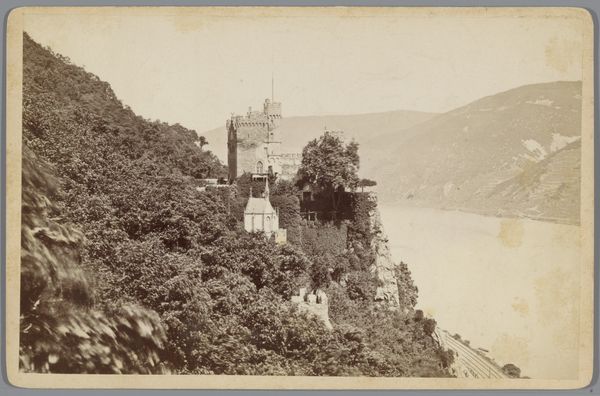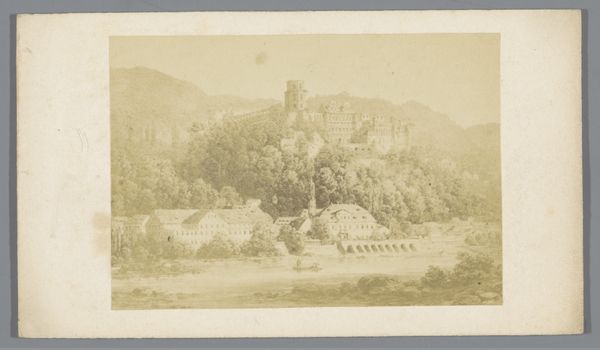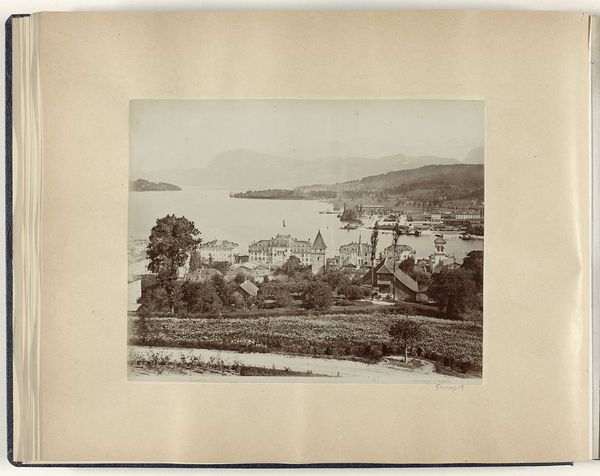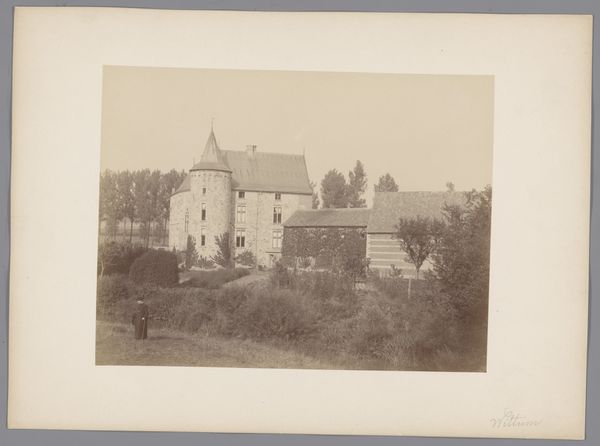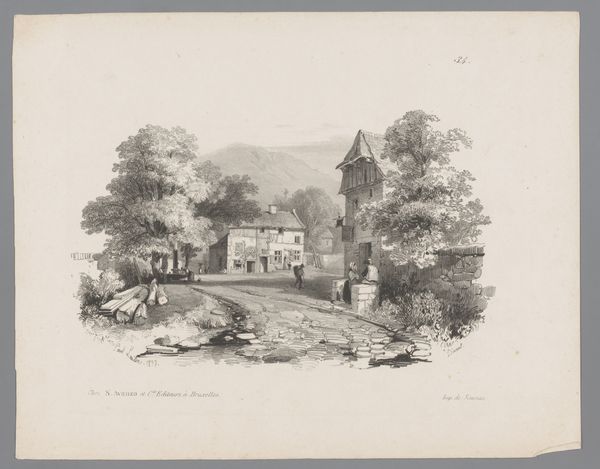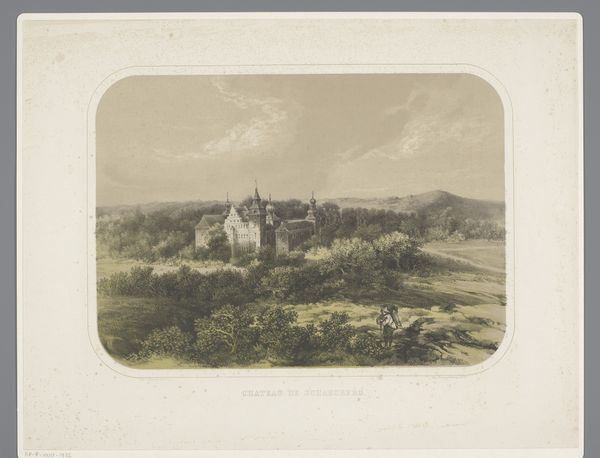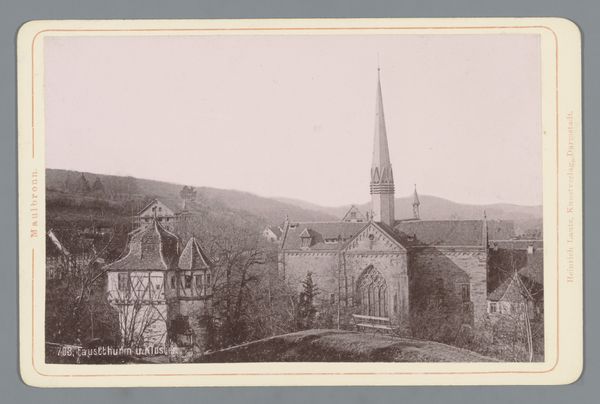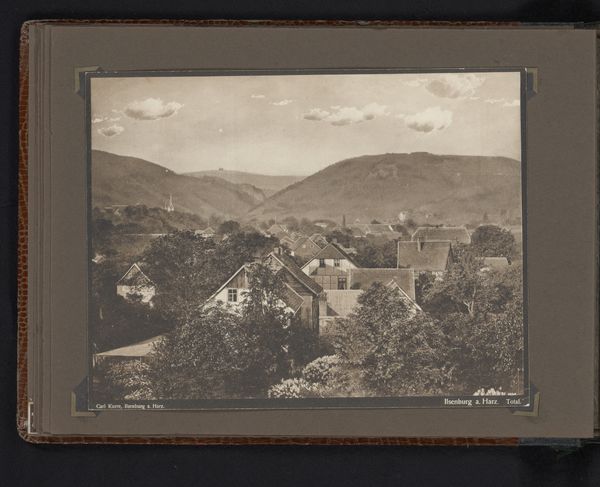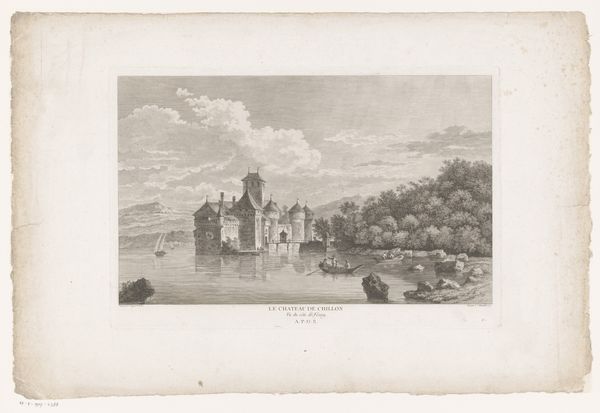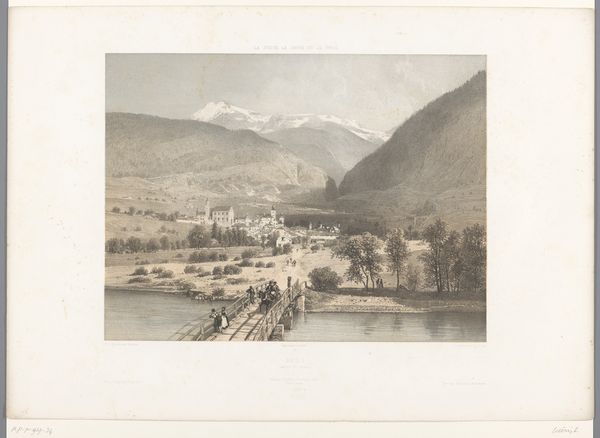
Fotoreproductie van een gravure van de abdij van Maria Laach in de Eiffel 1855 - 1875
0:00
0:00
Dimensions: height 66 mm, width 105 mm
Copyright: Rijks Museum: Open Domain
Curator: This gelatin silver print presents us with a “Photographic reproduction of an engraving of the Abbey of Maria Laach in the Eifel”, created sometime between 1855 and 1875 by J. Wirtgen. What are your initial thoughts on this view, from both historical and iconographic perspectives? Editor: My first impression is one of a quiet grandeur. The abbey nestled amidst the landscape, the stillness of the lake, it evokes a sense of romantic solitude. The sepia tones add to this impression. Curator: Indeed. This era saw photography taking on the aesthetics of Romanticism. Architectural photography, particularly of religious sites like Maria Laach, was also becoming more commonplace. It's intriguing to consider how these photographic reproductions contributed to broader cultural perceptions of religious life and architecture. This abbey, with its Benedictine history, held significant cultural sway in the Rhineland. Editor: Precisely! The abbey itself carries centuries of symbolism. Water, especially still water as we see here, often represents reflection, introspection. And a religious building by the lake can be interpreted as a spiritual anchor in a fluid, ever-changing world. Curator: But this "stillness" might be deceiving, wouldn't you agree? This photograph would have circulated, generating perceptions about the stability of religious institutions at a time when their power was increasingly challenged. What symbols of architectural stability were highlighted, and what socio-political purpose did they serve? Editor: That's a fascinating point. It's a reproduction, not reality, after all. The symmetry of the architecture, repeated across the water line—that is a very deliberate choice reinforcing not just the symbolic harmony of the religious order within but potentially an idealized view of the Church's authority within broader society. Curator: It definitely prompts one to consider the ways photography has been manipulated, right from its earliest days, as a tool for reinforcing institutional narratives. And for shaping a vision of history itself. Editor: It is also interesting to think of how architecture became not only about the structural design, but a projection of ideological power, presented through popular imagery. Thank you for the fresh ideas, as I had approached it primarily in terms of aesthetic power alone. Curator: It’s the interplay between aesthetic power and historical narratives, I think, that gives images like these lasting power to intrigue.
Comments
No comments
Be the first to comment and join the conversation on the ultimate creative platform.

